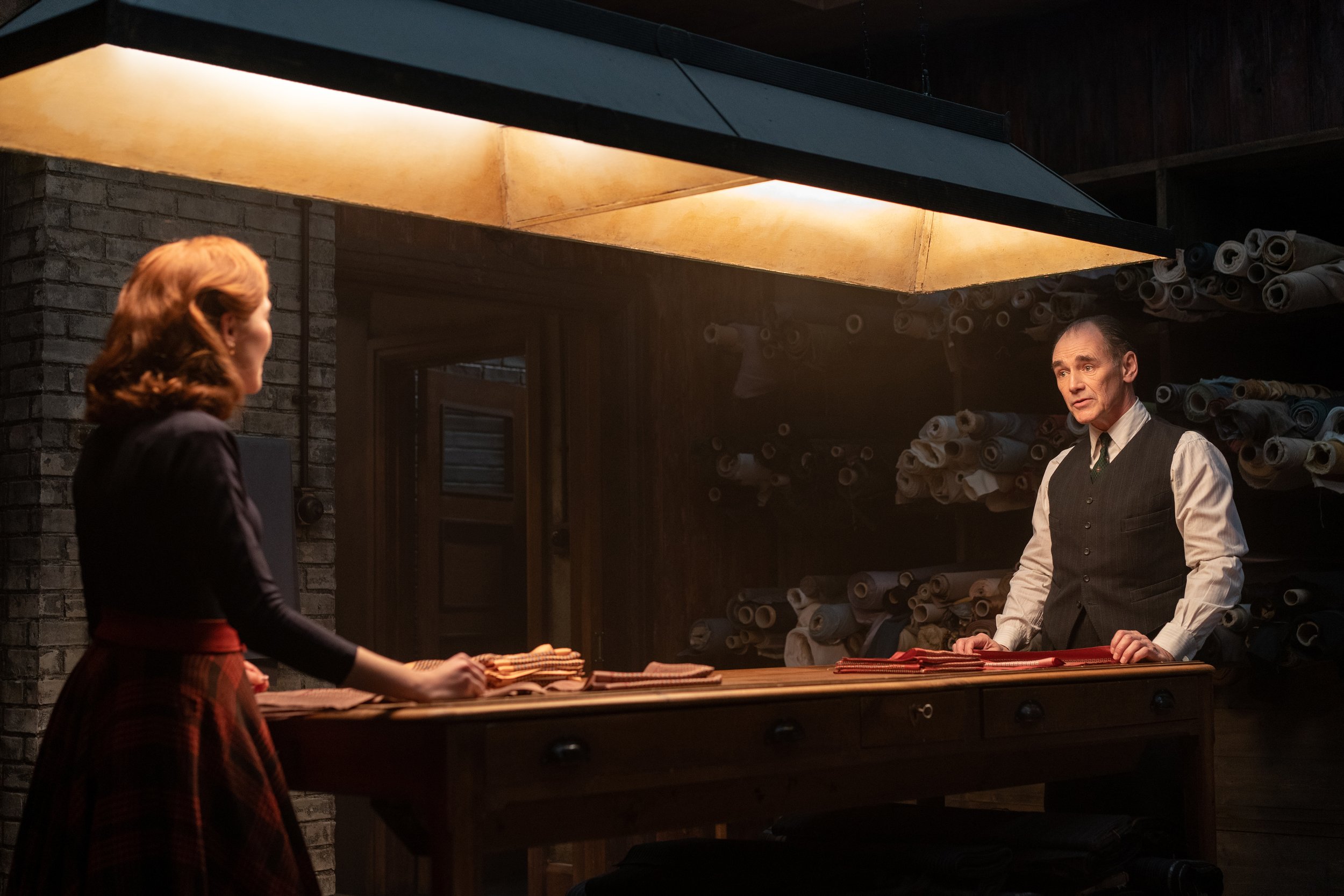Review: Mark Rylance gives a tight performance in 'The Outfit,' a thriller that feels too much like a stage play
Learning that “The Outfit” is an original screenplay and not based on a stage play is at first surprising and ultimately disappointing — because a viewer might be more forgiving of the movie’s contrivances if one were experiencing it with live actors.
The story takes place in Chicago, 1956, all in one place: The tailoring shop of Leonard Bunting (played by the great British actor Mark Rylance). We don’t know much about Bunting at first — just that he came to Chicago from Britain, where he once worked on the famed Savile Row. His only regular companionship is his receptionist, Mable (Zoey Deutch).
Like any businessman in Chicago in this era, Bunting must make peace with the Mob. He does this by allowing mobsters to put a dropbox in the back of his shop, where two young gangsters —
Richie (Dylan O’Brien) and Francis (Johnny Flynn) — pick up their daily payments. Richie, we’re told, is the son of the local mob boss, and he’s dating Mable.
One night, while Bunting is puttering away, Richie and Francis barge into the store in a panic. Richie has a bullet in his abdomen, and Francis has a pistol pointed at Bunting, demanding he help stitch Richie up. Francis also finds something important in the dropbox: A package from “the outfit,” the shadowy network of underworld organizations around the country. Francis, who wants to ingratiate himself to Richie’s father, Roy (Simon Russell Beale) — and delivering that package would be his ticket to getting between Roy and Richie.
Bunting finds himself caught in the middle of these gangland machinations. Both Francis and Roy are concerned about their crosstown enemies, the LaFontaines — and the possibility of a rat within their midst.
All of this should be a scissor-sharp thriller, and a great showcase for Rylance to play a complex character trying to puzzle out his path to surviving the night. But first-time director Graham Moore, who won an Oscar for his adapted screenplay of “The Imitation Game,” doesn’t have the confidence to pull off that kind of tense, nail-biting suspense.
Certainly Moore and co-writer Jonathan McClain get a lot out of their single setting, though not enough to shake the feeling that this is a barely adapted stage production. Unfortunately, those stagy limitations extend to some of the performances, particularly from British actors Flynn and especially Beale, a rightly acclaimed theater actor. On a West End stage, a live audience would forgive those forced Chicago accents, and would share the claustrophobic tension within Bunting’s shop. On film, “The Outfit” is a threadbare garment that doesn’t hold up in the wash.
——
‘The Outfit’
★★1/2
Opens Friday, March 18, 2022, in theaters. Rated R for some bloody violence, and language throughout. Running time: 105 minutes.







